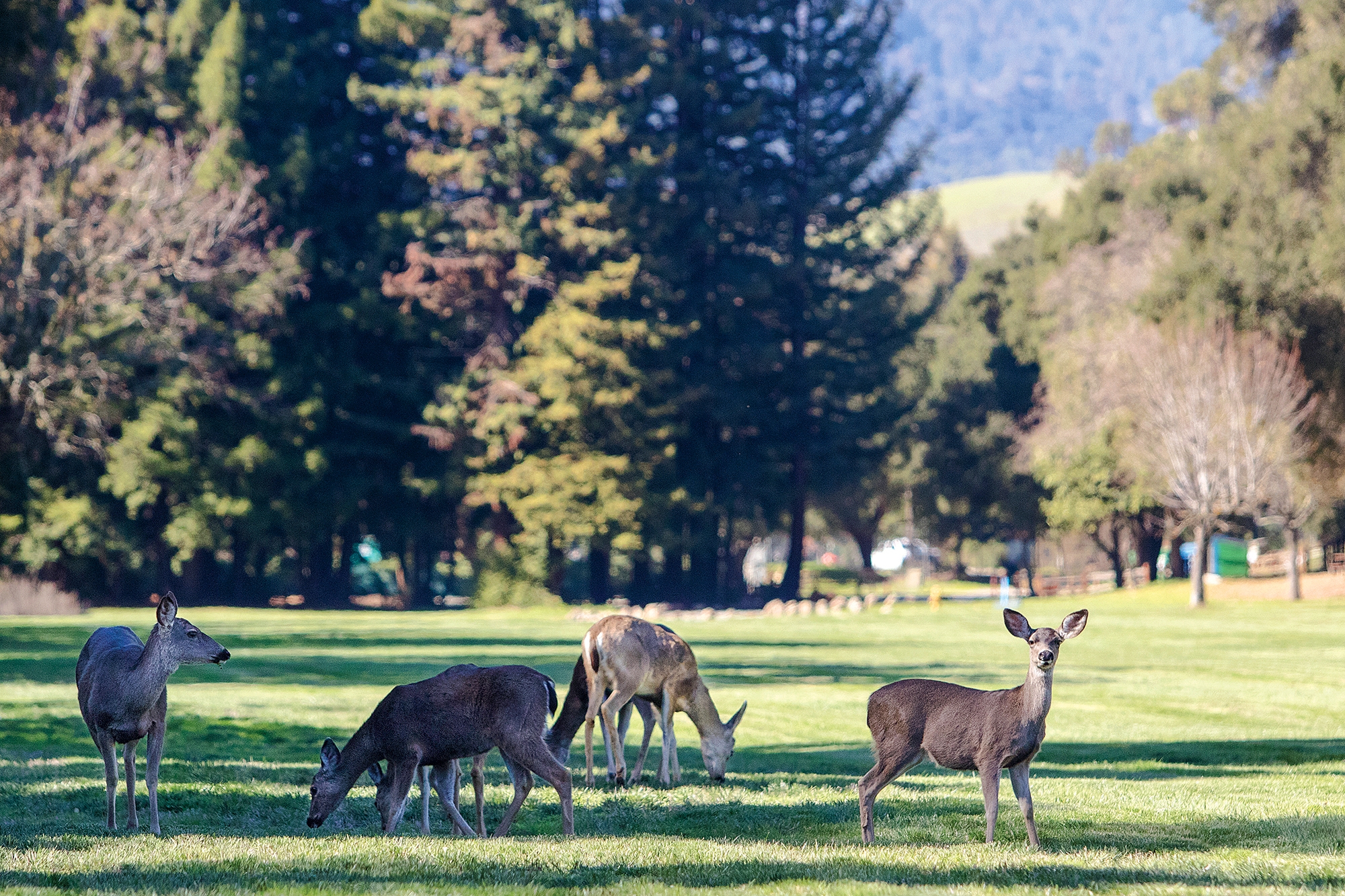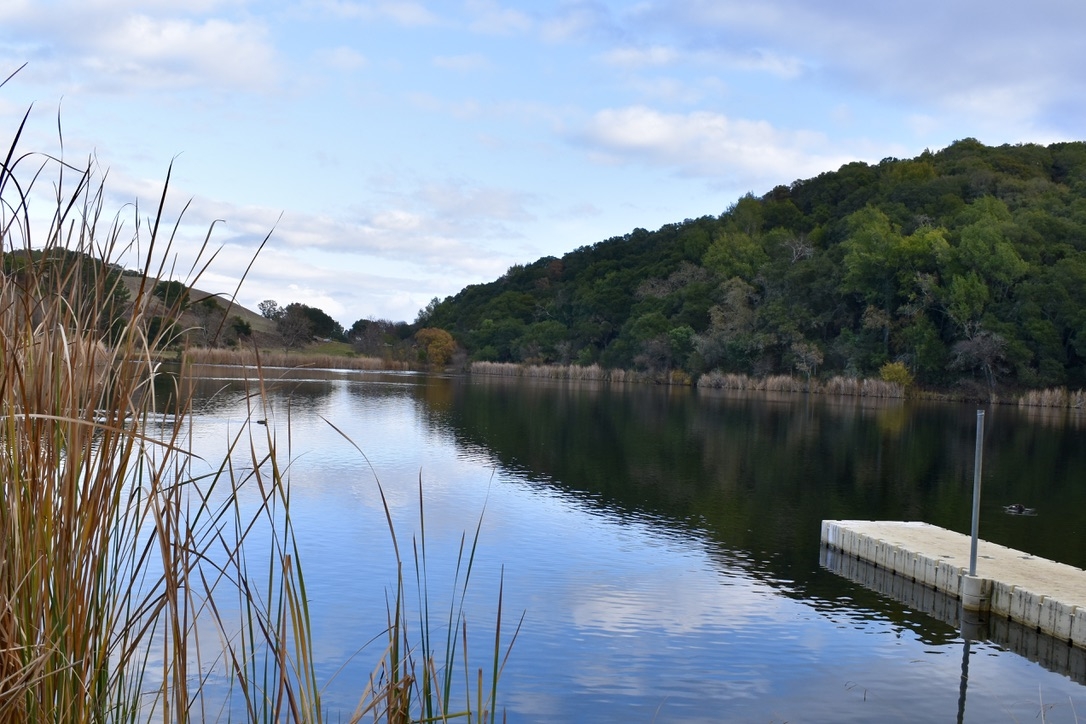When Palo Alto leaders voted last November to allow the broader public to visit Foothills Park, they officially closed a large, decades-old debate but opened a slew of smaller ones.
Many of these will return to center stage on Monday night, when the City Council will debate and possibly adopt rule changes for accessing Foothills Park. It also will consider a menu of new recommendations from the city's Parks and Recreation Commission, including further refinements of the visitor cap to the park, creation of an annual pass for park entry and enactment of discount rates for low-income visitors and those with disabilities.
Also, to underscore its environmentally sensitive nature, the council is set to officially change the park's name to the Foothills Nature Preserve, a move that was unanimously endorsed in recent weeks by both the parks commission and the Palo Alto Historical Association.
The city's policies for managing the park have been in a state of flux since Dec. 17, when the new policy allowing nonresidents to enter the park took effect. The number of visitors instantly spiked, with about 33,637 people visiting the park between Dec. 17, 2020, and Jan. 2 — up from 5,687 visitors over the same period in the prior year, according to Daren Anderson, division manager at the Community Services Department.
Concurrently, the council has seen a spike of anecdotes about traffic jams, parking shortages and environmental damage, including a growing number of "social trails" — pathways made by visitors who veer off existing trails. Anderson said the problems are particularly noticeable at Vista Hill and Boronda Lake.
The council reacted to these trends on Feb. 1, when it adopted an emergency ordinance lowering the number of visitors who can be at the park at any one time from 750 to 400, while giving staff leeway to raise it to 500. Council members also voted to charge $6 for park entry, though the fee has yet to take effect.
Both changes were intended to be stop-gap measures that would only remain in place until the city gathers more data and hammers out long-term policies for managing the preserve. On Monday, the council will consider the city's next steps for adopting these policies.
The Parks and Recreation Commission, meanwhile, has offered its own ideas. On Feb. 11, the commission unanimously recommended raising the limit to 650 visitors at any one time, while allowing staff to adjust the limit to as low as 300 if needed. The commission also supported creating an annual pass, which would cost residents $50. Nonresidents would be required to pay $65. Seniors, veterans and individuals currently serving in the military would receive 25% discounts, while low-income visitors would get reductions between 25% and 50%.
The commission also voted 5-2 to recommend a 25% discount for individuals with disabilities. The two dissenting commissioners, Vice Chair Jeff Greenfield and Commissioner Amanda Brown, both supported allowing free entry for vehicles with disability license plates or placards.
In discussing the visitor limit, the commission considered the city's recent experience with the new 400-person cap. Anderson said that on Feb. 6, the first Saturday since the policy was adopted, the city had to bar entry into the park three times because the number of visitors reached the capacity limit. The following day, the city raised the limit to 500. Once again, it closed the park three times because of the capacity limit.
Anderson suggested that early experience with the new policy suggests that the 400-person limit is too constrictive.
"We were shutting down really quickly because we hit capacity so fast," Anderson said at the Feb. 11 meeting. "The repercussions are that there are more people driving up and down Page Mill Road and people making strange U-turns in inappropriate places on Page Mill Road."
He noted that the park was very quiet throughout the day, with no parking issues of any kind. The following day, when the limit was raised to 500, there was "no appreciable difference in experience," with parking available even in popular outdoor areas. The park, he noted, did not feel overcrowded that day — a sharp contrast to December, when the visitor limit was 750.
Greenfield said while it will take time to fully understand the impacts of visitor limits on the park's ecosystem, the 400-person limit appears to be "lower than we wanted it." He visited the park on Sunday and said it felt "pretty empty."
Commissioner Jeff Lamere, who serves on an ad hoc committee charged with refining Foothills Park policies, also urged his colleagues not to make the limits too restrictive.
"We want to keep in mind how to best serve the underserved communities, which is one of the reasons we pushed to open the park," Lamere said.
If the council approves the commission's recommendation, the new policies pertaining to annual passes and capacity limits could be adopted immediately through the passage of an emergency ordinance, which would require approval from six of seven members. The city can also concurrently move ahead with a regular ordinance that would take effect 31 days after the council approves it on a "second reading."
To date, the council has been largely in accord on adopting new measures on Foothills Park, with some notable exceptions. During a Jan. 19 discussion, council members Lydia Kou and Greg Tanaka both pushed for lower visitor limits, while council member Alison Cormack argued against restricting access too much.
Vice Mayor Pat Burt initially proposed setting the cap at 500 visitors, but ultimately supported the lower limit championed by Kou and Tanaka. At the same time, he and the council majority rejected Tanaka's initial suggestion to set their entrance fee at $10.
"I don't think any of us yet know what is the right number of people who can be allowed at the park," Burt said. "I think we need to have a little bit more latitude there. … Are we going to restrict it so much that residents just won't be able to go there on the weekend?"
Cormack, who was the only council member to vote against the emergency measure to lower the visitor cap to 400 visitors, reiterated her opposition on Feb. 1, when she suggested that the council may have acted too fast in supporting an emergency ordinance that does not include annual passes or discounts for students and low-income residents. The council, she suggested, has created a situation that "harms Palo Alto residents who use Foothills Park often."
"Throwing out our favorite number for a capacity limit is a pretty careless way to make policy," Cormack said.




Comments
Registered user
Cuesta Park
on Feb 17, 2021 at 9:33 pm
Registered user
on Feb 17, 2021 at 9:33 pm
As an avid local hiker, I have been following this story with interest. Has the Palo Alto council considered a deal for this preserve to be purchased and managed by Peninsula Open Space Trust? I don't understand why Palo Alto needs to reinvent the wheel on managing this beautiful section of nature. P.O.S.T does a great job managing most of the undeveloped land and forests along the peninsula. Does anyone know why the city of Palo Alto needs to be involved in managing this considerably sized nature preserve? No snarky comments please. Thanks!
Registered user
North Whisman
on Feb 18, 2021 at 10:25 am
Registered user
on Feb 18, 2021 at 10:25 am
This all seems extremely premature. Of course when the park first opens there are going to be huge crowds of people who want to check it out for the first time, Especially amid a pandemic. But probably a year from now things will be much different. They shouldn't be making long term plans until they have spent enough time to understand what the typical usage pattern will be.